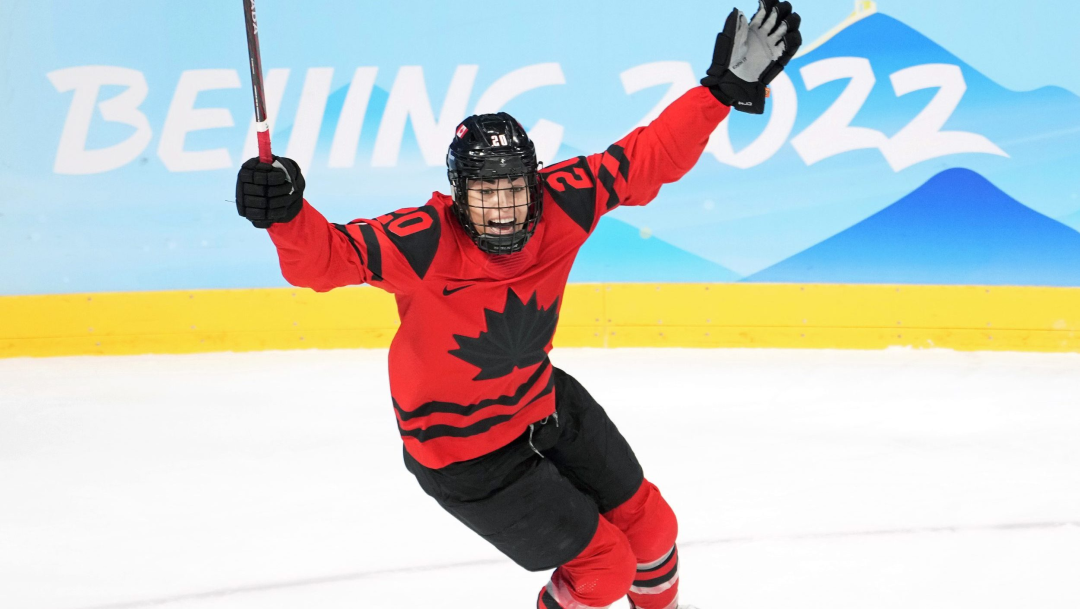The Professional Women’s Hockey League (PWHL) is ready for its first landmark moment, with its inaugural draft set for Monday [18 September].
The PWHL, which was formed over the summer and formally announced last month, promises to promote and unite the women’s game like never before, with senior vice-president of hockey operations Jayna Hefford hailing its arrival.
“We have never seen more excitement and demand for women’s sports, and through the launch of this league, the top women’s players in the world will have the opportunity to reach even greater heights,” said the four-time Winter Olympic gold medallist.
But, after many false starts in the world of women’s hockey, how did we arrive at this moment and what does this shift mean in terms of league structure, salaries, and stability?
With that in mind, British Ice Hockey is proud to present its introduction to the PWHL.
What is the PWHL and which cities will feature in season one?
The PWHL is the successor to the Premier Hockey Federation, which was founded in 2015 but bought out and folded into the Professional Women’s Hockey Players Association in July.
Since then, the PWHL has moved quickly to create a new standard-bearing competition for women’s hockey, ratifying its collective bargaining agreement in July.
Every team in the league is owned by Mark Walter, who chairs the Los Angeles Dodgers and owns the Mark Walter Group. Billie Jean King, the legendary tennis player, also sits on the board.
When asked about the league’s ownership structure, Hefford commented: “To have the backing of people like that, that bring experience, that bring resources, that bring capital, that bring a commitment to doing it right at the ground level, that’s a difference maker.”
The PWHL will feature six teams in its inaugural season, with franchises established in Toronto, Montreal, Ottawa, Boston, Minneapolis-St. Paul, and New York.
Preseason will open in November, with the 24-game campaign opening in January.
Which players will skate in the PWHL’s inaugural season?
The PWHL’s six franchises have signed three free agents each, with Marie-Philip Poulin, Luara Stacey, and Ann-Renee Desbiens joining Montreal; and Sarah Nurse, Blayre Turnbull, and Renatat Fast agreeing terms with Toronto.
With the first batch of players signed, the league will hold its maiden draft on 18 September, with 90 players set to be spread between the six franchises throughout a 15-round selection process.
Players who are left on the table after the draft will become free agents and therefore have clearance to negotiate with any team.
In its first season, the PWHL will feature a mixture of talent formerly of the Professional Women’s Hockey Players Association, Premier Hockey Federation, and major European leagues.
Will the PWHL change women’s hockey for the better?
There is a lot of optimism surrounding the new league, with a spirit of collaboration helping to drive progress for the players and their new bosses.
Unlike previous women’s hockey leagues, the PWHL is backed by serious money, plus sponsorship revenue from high-profile companies across the region.
As a result, there is hope that basic standards will climb each season, with simple measures, such as free player parking and spare equipment, set to make a significant difference for players on a day-to-day basis.
The PWHL has said their players’ salaries will sit between $35,000 and $80,000 – which represents progress from previous professional eras.
Brianne Jenner, who represented the players in negotiations with the league, admitted that more progress must be made on pay levels in women’s hockey.
“I think we have a long way to go,” she said. “We recognize that our players are dedicating a lot of time, sacrificing as much as any male counterpart and putting, you know, the sweat equity into their work and the dedication into their work. So, to see our sport have an opportunity where players can make a salary, a fair salary, is huge. And, you know, it’s just the beginning.”












